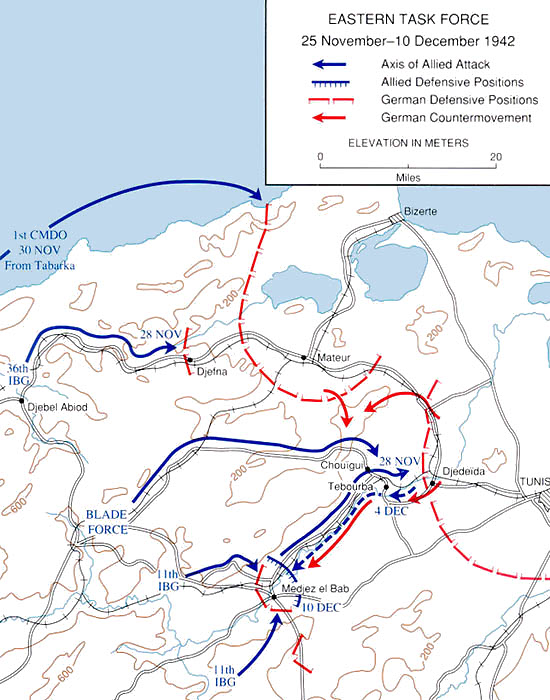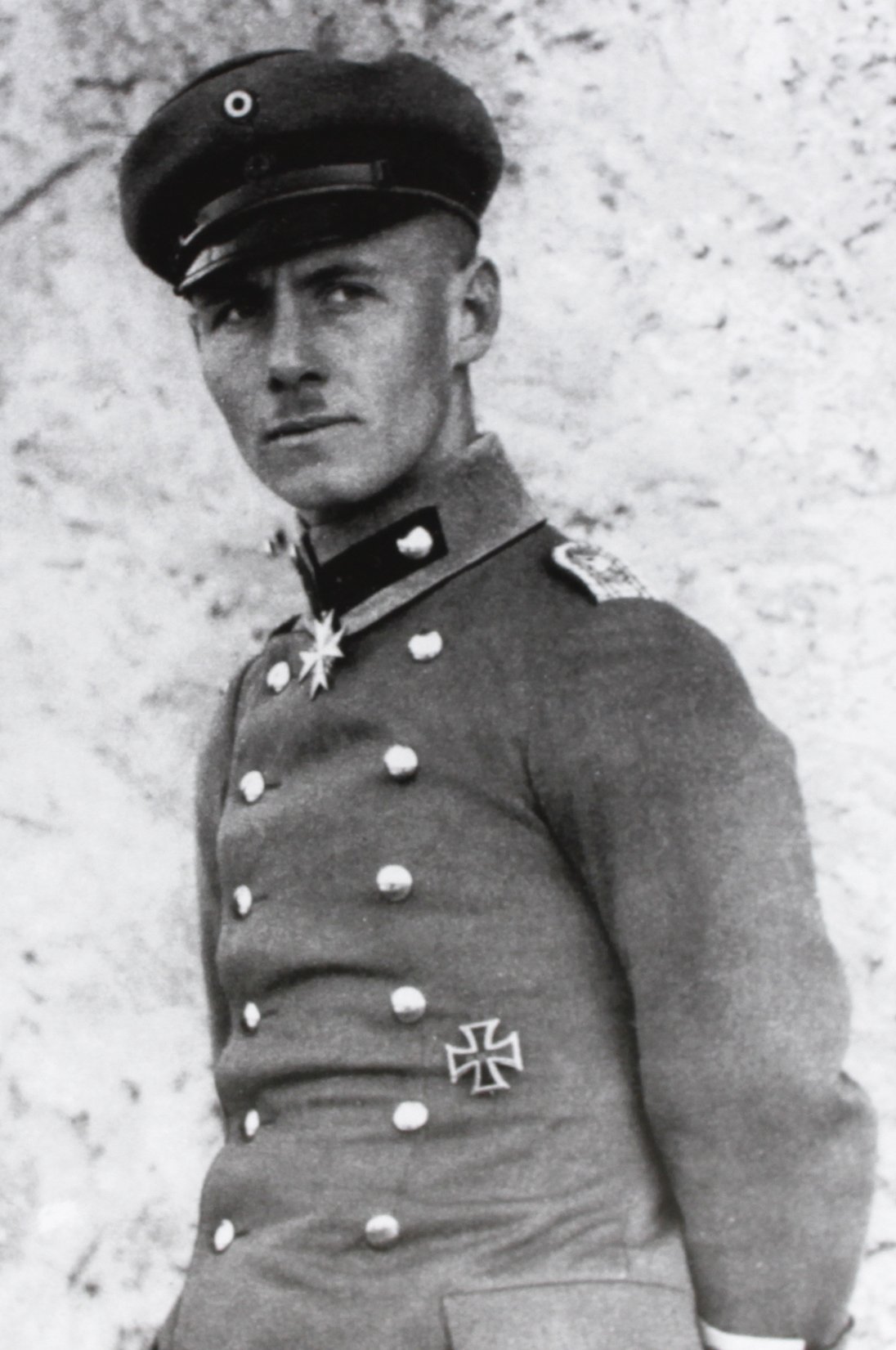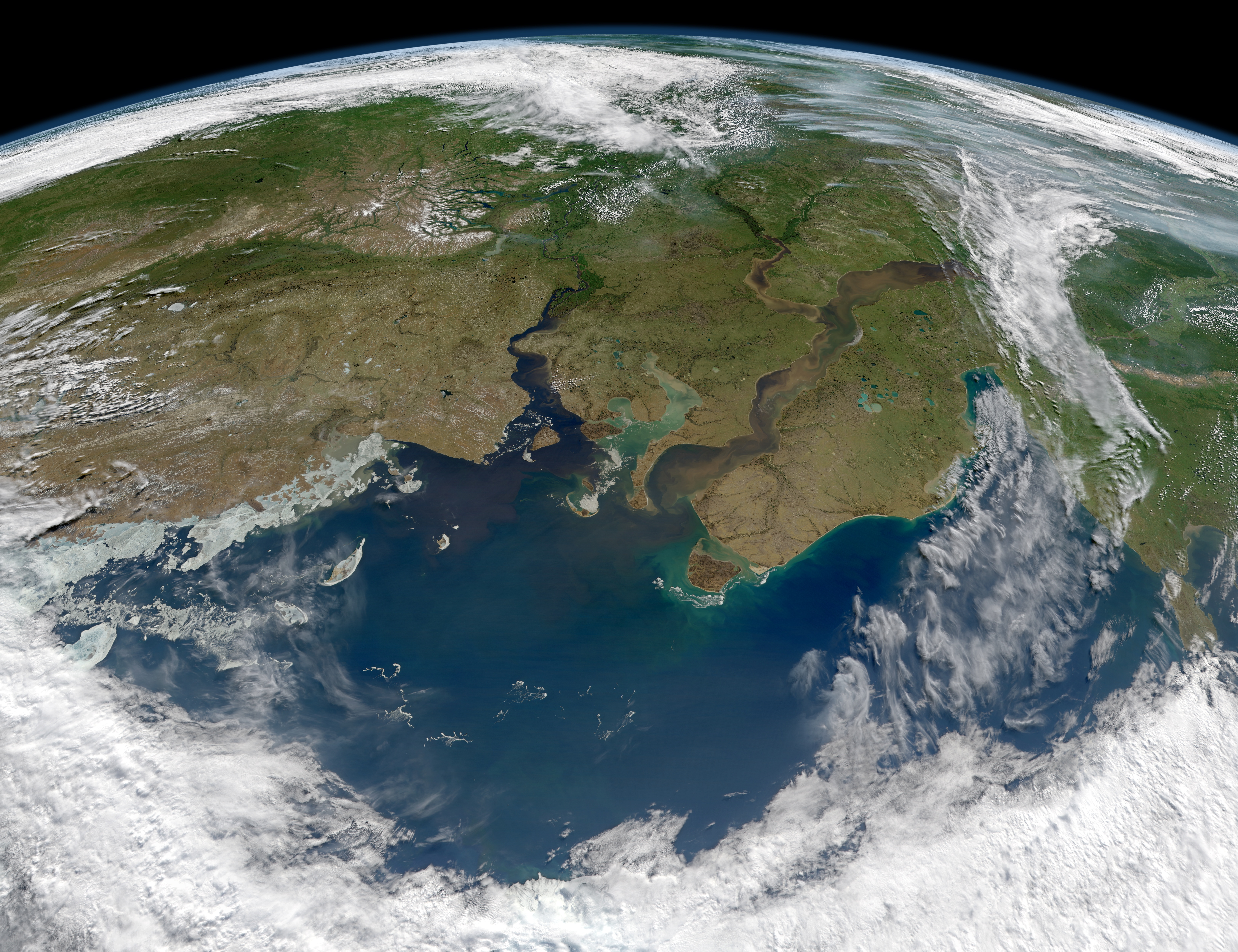|
Operation Ochsenkopf
(Operation Ox Head) also known as the Battle of Sidi Nsir and the Battle of Hunts Gap was an Axis offensive operation in Tunisia from 1943, during the Tunisia Campaign of the Second World War. The offensive and a subsidiary operation was intended to gain control of Medjez el Bab, Béja, El Aroussa, Djebel Abiod and a position known as Hunt's Gap, between the British First Army and the Axis Army Group Africa (/). The offensive gained some ground, but none of the more ambitious objectives were achieved before the operation was called off due to increasing losses of infantry and tanks, particularly the heavy Tigers. was the last big Axis offensive by the 5th Panzer Army before the surrender of the Afrika Korps in May 1943. Background After the Battle of Kasserine Pass , the Axis created Army Group Africa (/) as a command headquarters for the 5th Panzer Army and the Italian 1st Army in Tunisia. Adolf Hitler and the German General Staff (OKW) believed that Hans-Jürgen von ... [...More Info...] [...Related Items...] OR: [Wikipedia] [Google] [Baidu] |
Tunisia Campaign
The Tunisian campaign (also known as the battle of Tunisia) was a series of battles that took place in Tunisia during the North African campaign of the Second World War, between Axis and Allied forces from 17 November 1942 to 13 May 1943. The Allies consisted of British Imperial Forces, including a Greek contingent, with American and French corps. Despite initial successes by the German and Italian forces brought from the mainland and which had withdrawn into and occupied Tunisia after their defeat in the Western Desert and the success of Operation Torch, massive supply interdiction efforts and Allied assaults from east and west led to the decisive defeat of the Axis. Over 260,000 German and Italian troops were taken as prisoners of war, including most of the Afrika Korps. Background Western Desert The first two years of the war in North Africa were characterized by chronic supply shortages and transport problems. The North African coast has few natural harbors and t ... [...More Info...] [...Related Items...] OR: [Wikipedia] [Google] [Baidu] |
5th Panzer Army
5th Panzer Army () was the name of two different German armoured formations during World War II. The first of these was formed in 1942, during the North African campaign and surrendered to the Allies at Tunis in 1943. The army was re-formed in France in 1944, fought in Western Europe and surrendered in the Ruhr pocket in 1945. History Formation in Italy and deployment in North Africa On 17 November 1942, the ''Stab Nehring'' staff, assigned to the German general in Rome, was reformed to become the LXXXX Army Corps. This staff was soon repurposed to become the 5th Panzer Army. The 5th Panzer Army was created on 8 December 1942 as a command formation for armoured units forming to defend Tunisia against Allied attacks which threatened, after the success of the Allied Operation Torch landings in Algeria and Morocco. The army fought alongside the Italian First Army as a part of Army Group Afrika. The army capitulated on 13 May 1943, along with its commander Gustav von Vaerst. ... [...More Info...] [...Related Items...] OR: [Wikipedia] [Google] [Baidu] |
10th Panzer Division (Wehrmacht)
The 10th Panzer Division () was an armoured division in the German Army, the ''Heer'', during World War II, established in March 1939. The 10th Panzer Division was formed in Prague in March 1939, and served in the Army Group North reserve during the invasion of Poland of the same year. The division participated in the Battle of France in 1940, including the Siege of Calais, and in Operation Barbarossa attached to Army Group Center in 1941. After taking heavy casualties on the Eastern Front it was sent back to France for rehabilitation and to serve as a strategic reserve against potential Allied invasion. The division was rushed to Tunisia after Operation ''Torch'' (1942) and spent six months in that theatre, where it engaged both British and American forces. It caused severe losses to the "green" US Army in some of their first encounters with the Germans under Field Marshal Erwin Rommel at the Battle of Kasserine Pass (1943). It was later lost in the general Axis surre ... [...More Info...] [...Related Items...] OR: [Wikipedia] [Google] [Baidu] |
Mareth Line
The Mareth Line was a system of fortifications built by France in southern French protectorate of Tunisia, Tunisia in the late 1930s. The line was intended to protect Tunisia against an Kingdom of Italy#Fascist regime (1922–1943), Italian invasion from its colony in Libya. The line occupied a point where the routes into Tunisia from the south converged, leading toward Mareth, with the Mediterranean Sea to the east and mountains and a sand sea to the west. The line ran along the north side of Wadi Zigzaou for about south-westwards from the Gulf of Gabès to Cheguimi and the Djebel (mountain) Matmata on the Dahar plateau between the Grand Erg Oriental (Great Eastern Sand Sea) and the Matmata, Tunisia, Matmata hills. The Tebaga Gap, between the Mareth line and the Great Eastern Sand Sea, a potential route by which an invader could outflank the Mareth line, was not surveyed until 1938. After the French Armistice of 22 June 1940, the Mareth Line was demilitarised under the supervis ... [...More Info...] [...Related Items...] OR: [Wikipedia] [Google] [Baidu] |
Bernard Montgomery, 1st Viscount Montgomery Of Alamein
Field marshal (United Kingdom), Field Marshal Bernard Law Montgomery, 1st Viscount Montgomery of Alamein (; 17 November 1887 – 24 March 1976), nicknamed "Monty", was a senior British Army officer who served in the First World War, the Irish War of Independence and the Second World War. Montgomery first saw action in the First World War as a junior officer of the Royal Warwickshire Regiment. At Méteren, near the Belgian border at Bailleul, Nord, Bailleul, he was shot through the right lung by a sniper, during the First Battle of Ypres. On returning to the Western Front (World War I), Western Front as a general staff officer, he took part in the Battle of Arras (1917), Battle of Arras in AprilMay 1917. He also took part in the Battle of Passchendaele in late 1917 before finishing the war as chief of staff of the 47th (1/2nd London) Division, 47th (2nd London) Division. In the Interwar period, inter-war years he commanded the 17th (Service) Battalion, Royal Fusiliers and, ... [...More Info...] [...Related Items...] OR: [Wikipedia] [Google] [Baidu] |
Eighth Army (United Kingdom)
The Eighth Army was a field army of the British Army during the Second World War. It was formed as the Western Army on 10 September 1941, in Egypt, before being renamed the Army of the Nile and then the Eighth Army on 26 September. It was created to better control the growing Allied force based in Egypt and to direct its efforts to lift the siege of Tobruk via Operation Crusader. It later directed Allied forces through the remaining engagements of the Western Desert campaign, oversaw part of the Allied effort during the Tunisian campaign and finally led troops throughout the Italian campaign. During 1943, it made up part of the 18th Army Group before being assigned to the 15th Army Group (later, the Allied Armies in Italy). Throughout its campaigns, it was a multi-national force and its units came from Australia, British India, Canada, Czechoslovakia, Cyprus, the Free French Forces, Greece, Newfoundland, New Zealand, Poland, Rhodesia, South Africa, Mauritius, as well a ... [...More Info...] [...Related Items...] OR: [Wikipedia] [Google] [Baidu] |
Comando Supremo
''Comando Supremo'' (Supreme Command) was the highest command echelon of the Italian Armed Forces between June 1941 and May 1945. Its predecessor, the ''Stato Maggiore Generale'' (General Staff), was a purely advisory body with no direct control of the several branches of the armed forces and with very little staff. Created amidst the exigencies of World War II, ''Comando Supremo'' was a large organization with several departments and operational command of the armed forces on the active fronts. At the end of the war, it was reduced to a purely advisory role again. Background At the time of Italy's entry into World War II on 10 June 1940, the Italian armed forces were not unified, although Prime Minister Benito Mussolini held the ministries of Italian Minister of War, War, the Minister of the Navy (Italy), Navy and Minister of the Air Force (Italy), Air Force concurrently. On 11 June 1940, King Victor Emmanuel III named Mussolini "Supreme Commander of the Armed Forces Operating on ... [...More Info...] [...Related Items...] OR: [Wikipedia] [Google] [Baidu] |
Army Group Africa
The Panzer Army Africa ( German: ''Panzerarmee Afrika''; Italian: ''Gruppo Corazzato Africa'') was a joint German-Italian field army that fought in the North African campaign during World War II. It consisted of one German corps and three Italian corps. On 1943, during the Tunisian campaign, the ''Panzerarmee Afrika'' was changed to as the ''Army Group Africa'', and was consisted of the newly-formed German 5th Army and the Italian 1st Army. During the campaigns in North Africa, the ''Panzerarmee Afrika'' was subordinated to the Italian command, as well as to German command headquarters in the Mediterranean. History Panzer Group Africa When the ''Afrikakorps'' was formed on 11 January 1941 it was subordinated to the Italian chain of command in Africa. In the middle of 1941 the Oberkommando der Wehrmacht (OKW, Armed Forces High Command) created a larger command structure in Africa, forming a new headquarters, Panzer Group Africa (, ). On 15 August 1941, Panzer Group Africa was ... [...More Info...] [...Related Items...] OR: [Wikipedia] [Google] [Baidu] |
Erwin Rommel
Johannes Erwin Eugen Rommel (; 15 November 1891 – 14 October 1944), popularly known as The Desert Fox (, ), was a German '' Generalfeldmarschall'' (field marshal) during World War II. He served in the ''Wehrmacht'' (armed forces) of Nazi Germany, as well as in the ''Reichswehr'' of the Weimar Republic, and the army of Imperial Germany. Rommel was a highly decorated officer in World War I and was awarded the ''Pour le Mérite'' for his actions on the Italian Front. In 1937, he published his classic book on military tactics, '' Infantry Attacks'', drawing on his experiences in that war. In World War II, he commanded the 7th Panzer Division during the 1940 invasion of France. His leadership of German and Italian forces in the North African campaign established his reputation as one of the ablest tank commanders of the war, and earned him the nickname ''der Wüstenfuchs'', "the Desert Fox". Among his British adversaries he had a reputation for chivalry, and his phrase ... [...More Info...] [...Related Items...] OR: [Wikipedia] [Google] [Baidu] |
OB Süd
The Ob (; ) is a major river in Russia. It is in western Siberia, and with its tributary the Irtysh forms the world's seventh-longest river system, at . The Ob forms at the confluence of the Biya and Katun which have their origins in the Altai Mountains. It is the westernmost of the three great Siberian rivers that flow into the Arctic Ocean (the other two being the Yenisei and the Lena). Its flow is north-westward, then northward. The main city on its banks is Novosibirsk, the largest city in Siberia, and the third-largest city in Russia. It is where the Trans-Siberian Railway crosses the river. The Gulf of Ob is the world's longest estuary. Names The internationally known name of the river is based on the Russian name ''Обь'' (''Obʹ'', ). Possibly from Proto-Indo-Iranian '' *Hā́p-'', "river, water" (compare Vedic Sanskrit ''áp-'', Persian ''āb'', Tajik ''ob'', and Pashto ''obə'', "water"). Katz (1990) proposes Komi ''ob'' 'river' as the immediate source of der ... [...More Info...] [...Related Items...] OR: [Wikipedia] [Google] [Baidu] |
Albert Kesselring
Albert Kesselring (30 November 1885 – 16 July 1960) was a German military officer and convicted war crime, war criminal who served in the ''Luftwaffe'' during World War II. In a career which spanned both world wars, Kesselring reached the rank of the (Field marshal) and became one of Nazi Germany's most highly decorated commanders. Kesselring joined the Bavarian Army as an officer cadet in 1904, serving in the artillery branch. He completed training as a Observation balloon, balloon observer in 1912. During World War I, he served on both the Western Front (World War I), Western and Eastern Front (World War I), Eastern fronts and was posted to the Army Staff (Germany), Army Staff, despite not having attended the War Academy (Kingdom of Bavaria), War Academy. Kesselring served in the after the war, but was discharged in 1933 to become head of the Department of Administration at the Ministry of Aviation (Nazi Germany), Ministry of Aviation, where he became involved in the re-e ... [...More Info...] [...Related Items...] OR: [Wikipedia] [Google] [Baidu] |
Oberkommando Der Wehrmacht
The (; abbreviated OKW [oː kaːˈve] Armed Forces High Command) was the Command (military formation), supreme military command and control Staff (military), staff of Nazi Germany during World War II, that was directly subordinated to Adolf Hitler. Created in 1938, the OKW replaced the Ministry of the Reichswehr, Reich Ministry of War and had nominal oversight over the individual high commands of the Wehrmacht, country's armed forces: the army (), navy () and air force (). With the start of World War II, tactical control of the Waffen-SS was also exercised by it. There was no direct chain of command between the OKW and the other High Commands. Rivalry with the different services' commands, mainly with the Oberkommando des Heeres, Army High Command (OKH), prevented the OKW from becoming a unified German General Staff in an effective command hierarchy, chain of command, though it did help coordinate operations among the three services. During the war, the OKW acquired more and ... [...More Info...] [...Related Items...] OR: [Wikipedia] [Google] [Baidu] |







